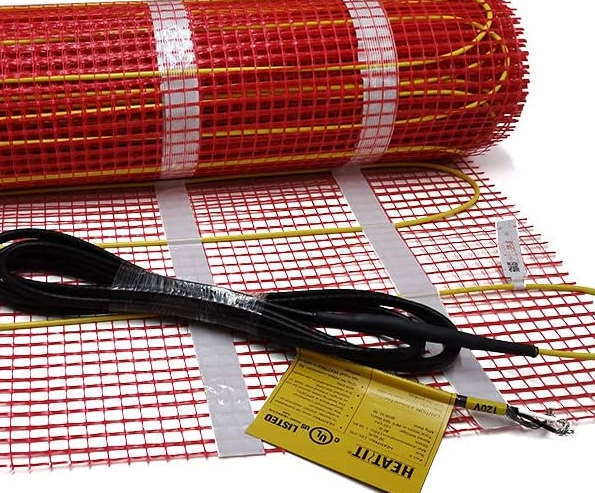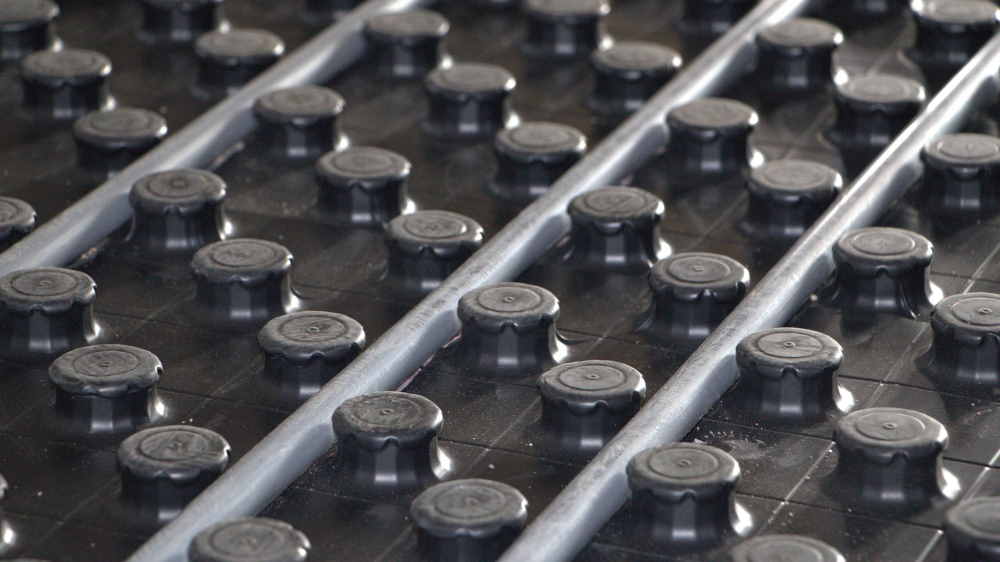Underfloor heating systems are systems that heat a home or other building from the ground up. They work by circulating hot water or electricity through a network of pipes embedded into the floor. This type of system provides even heat distribution and can be more efficient than other heating methods. Underfloor heating can be used in both residential and commercial buildings.
Underfloor heating systems are a type of heating system that uses hydronic or electric mats, rods, or cables to provide heat to a room from the floor up. This system is often used in residential and commercial buildings to provide an even and efficient heating system throughout the entire space. The warmth is generated from the underfloor heating system and dispersed throughout the space via convection and radiation.
What is the difference between water heating and electric underfloor heating systems?
Water heating systems use hot water that is heated in a boiler to heat the space. The hot water is then circulated through pipes embedded in the floor. Electric heating systems use electricity to heat elements within the floor, which then transfer heat to the space. Electric heating systems are typically more expensive to install and operate than water heating systems, but they are more efficient and provide more even heat distribution.
Water Underfloor Heating System Installation
- Plan your space – Before beginning your underfloor heating installation, it is important to map out the space and measure its dimensions. This will help you to determine the correct number of heating elements and the size of the subfloor area that needs to be heated. It is also important to assess the type of flooring you will be using, as this will affect the type of underfloor heating system you need.
- Prepare the subfloor – Depending on the type of flooring you will be using, you may need to prepare the subfloor by laying down a layer of insulation and/or a vapor barrier. This will help to maximize the efficiency of the heat transfer and reduce energy costs.
- Install the heating elements – The next step is to install the heating elements in the floor. This may involve laying down a network of water pipes or electric cables, depending on the type of system you have chosen.
- Connect the system to your power source – Once the heating elements have been installed, you will need to connect them to their power source. This will usually involve connecting the system to the mains water supply or to an electric circuit.
- Finish the flooring – Once all of the heating elements have been installed and connected to their power source, you can finish the flooring. This may involve laying down a layer of tile, carpet, or hardwood flooring.
- Set the thermostat – The final step is to set the thermostat so that the system can be controlled. This may involve using a programmable thermostat or a manual one.
Cost: The cost of installing an underfloor heating system will depend on the size and complexity of the project, as well as the type of system you choose. Generally, the cost can range from a few hundred dollars for a basic system to several thousand for a more complex system.
Electric Underfloor Heating System Installation
- Determine the size of the area to be heated: The size of the area to be heated will determine the size and amount of the materials needed to complete the installation. It is important to accurately measure the area that needs to be heated and consult a qualified electrician to determine the correct size of the heating system.
- Calculate the power requirement: Based on the size of the area, the power requirements must be calculated. This calculation will determine the power output needed to effectively and efficiently heat the area. The power output must be equal to the size of the area to be heated.
- Purchase the necessary materials: Depending on the size and complexity of the installation, the necessary materials will vary. The materials typically include the heating element, thermostat, wiring, insulation, and a power output controller.
- Prepare the area for installation: The area must be prepared for installation. This includes removing any carpets or furniture, installing vapor barrier, and laying down the insulation. Once this is complete, the installation of the heating element can begin.
- Install the heating element: The heating element must be installed according to the manufacturer’s instructions. This may include cutting the heating element to size, securing it in place, and connecting it to the power output controller.
- Install the thermostat: The thermostat must be installed according to the manufacturer’s instructions. This may include connecting it to the power output controller and setting the desired temperature.
- Connect the wiring: The wiring must be connected according to the manufacturer’s instructions. This may include connecting the wiring to the power output controller, thermostat, and heating element.
- Test the system: Once the installation is complete, the system must be tested to ensure it is working correctly. Any issues should be addressed before the system is used.

UL LISTED for USA and Canada. Fluoropolymer (One of the most heavy-duty plastic materials) as the insulation. Can be used for wet application, but not for installation in pool and spa areas, nor outdoor use. You’ll get a 30 years limited warranty for the heating mesh.
Cost: The cost of an electric underfloor heating system installation will vary depending on the size of the area, the type of materials used, and the complexity of the installation. On average, an electric underfloor heating system installation can cost anywhere from $1,000 – $5,000.
Which system is more efficient?
Electric heating systems are typically more efficient than water heating systems. This is because electric systems do not require a boiler or other equipment to heat the water, and they typically have more precise temperature controls. Electric systems also tend to provide a more even heat distribution than water systems.
What about the costs?
The cost of installing and operating an underfloor heating system will depend on the type of system and the size of the space being heated. Generally speaking, electric systems tend to be more expensive to install and operate than water systems. However, electric systems are typically more efficient and provide a more even heat distribution.
What type of underfloor heating do US citizens prefer?
In the USA, electric underfloor heating systems are the most popular type of system. This is because electric systems tend to be more efficient, provide a more even heat distribution, and are typically more cost-effective than water systems.
What type of underfloor heating do Canadian citizens prefer?
In Canada, water underfloor heating systems are the most popular type of system. This is because water heating systems are used in homes and therefore, heated water can be distributed to underfloor heating pipes. This kind of solution tends to be more cost-effective than electric systems and provides efficient hot water usage.
What are the most known brands in the USA?
The most well-known brands of underfloor heating systems in the USA are SunTouch, Nuheat, and WarmlyYours. These brands offer a variety of types of systems and are popular for either residential or commercial applications.
What are the most-known brands in Canada?
The most well-known brands of underfloor heating systems in Canada are WarmlyYourself, Nuheat, and SunTouch. These brands offer a variety of types of systems and are popular for both residential and commercial applications.
Conclusion on the topic
Underfloor heating systems provide an efficient and comfortable way to heat a home or other building. They come in both water and electric systems, with electric systems typically being more efficient and cost-effective. In the USA, electric systems are the most popular type of system, while in Canada, water systems are the most popular. Popular brands of underfloor heating systems in both the USA and Canada include SunTouch, Nuheat, and WarmlyYours.
